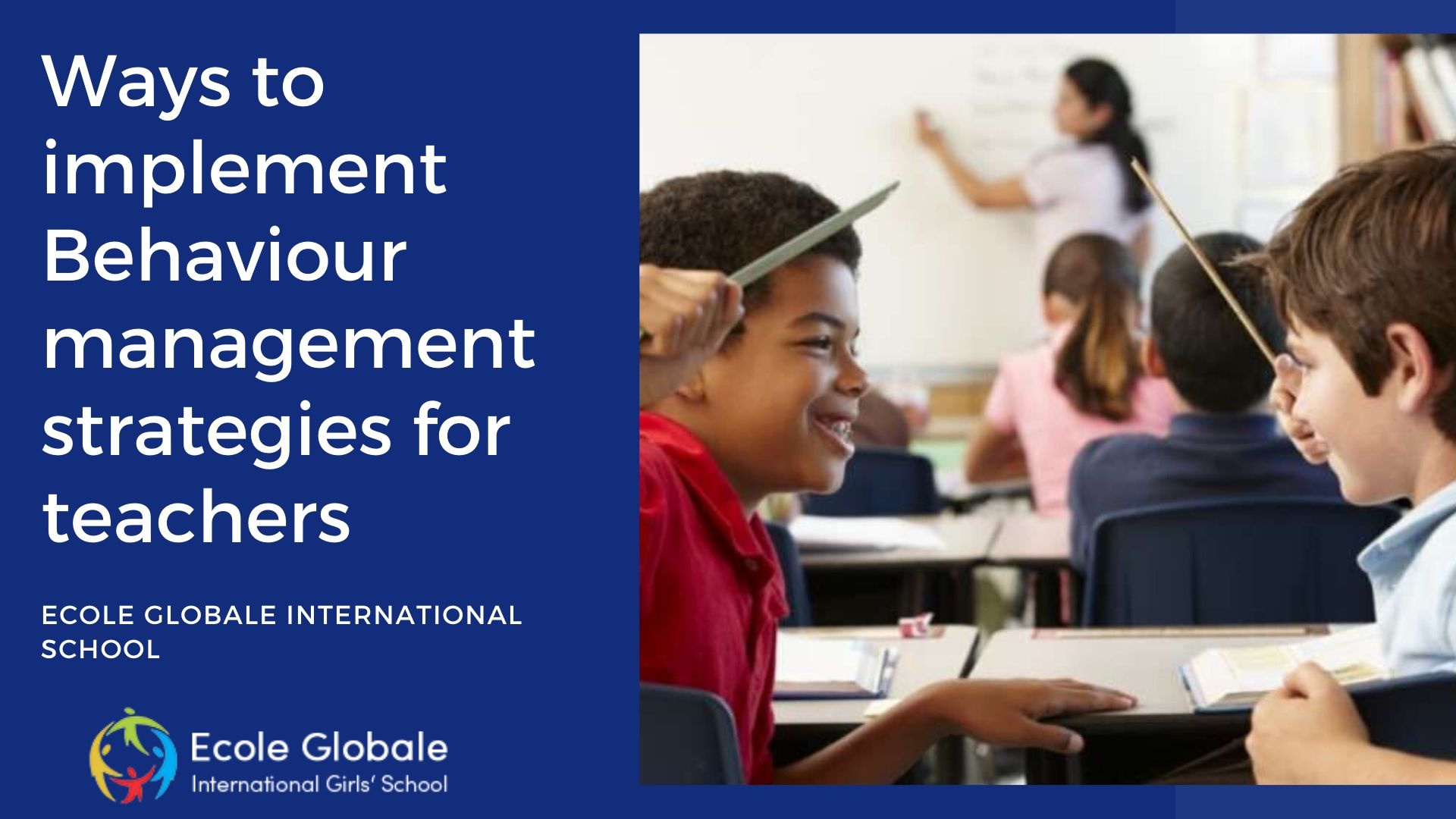Using a set of educational practices that bring in positive behavioral mannerisms in the students is called as behavior management. These are some known useful strategies to prevent student misconduct in the school (and help them know the behavior practice outside the school as well) and to create and maintain a positive school/classroom environment that is advantageous for teaching and learning.
Effective behavior management thus includes two types of intervention like preventive or proactive interventions and curative or corrective interventions. Preventive interventions thus promote the adoption of appropriate behaviors in the school and other formal setups.
Behavior and class management
Preventive interventions – Positive relationship, Safe and predictable environment, Supervision of students, Organization of the class, Effective teaching.
Curative interventions – Indirect and direct interventions, Behavioral data, Function of behavior, specialized help.
Establish a positive relationship with students
- Create a secure, orderly, predictable and positive environment
- Constantly supervise and supervise students
- Organize your class
- Make use of effective teaching Methods
Each of these interventions corresponds to a set of strategies and means. These represent the gestures and concrete actions that the teacher must take daily to prevent misconduct by students, and encourage the adoption of appropriate behaviors. In the following paragraphs, there are some of these preventive strategies and corrective interventions mentioned that could be applied in a school environment-
Create a secure, orderly, predictable and positive environment
To create such an environment, there must be clear expectations. Given the child’s age and understanding level, these expectations must be set. Doing so would help in creating standards of conduct in the classroom and ensuring the development of appropriate behaviors in students. It does not consist in drawing up an interminable list. Rather, it involves identifying 3 to 5 key values likes being respectful, being responsible, etc. that are defined concretely by specific behaviors and located in the contexts of everyday life. This exercise makes it possible to obtain a matrix which provides the pupils with a sort of road map informing them precisely about how they should and are expected to behave.
Constantly supervise and supervise students
As per the dehradun schools, the skills to effectively supervise student behaviors are among the best means of preventing the aggravation of discipline problems in the classroom and within the school. Different strategies allow the teacher to effectively supervise the students, review the rules and expectations periodically, constantly supervise the students, move around, go to the difficulties quickly, etc.
Organize the class
A well-organized classroom is a structured place where wasted time is minimized, and teaching-learning time is maximized because it is in unstructured times where there is wasted time that students tend to exhibit misconduct. Ensuring that different preventive measures are executed is important. This warrants for optimal organization of the classroom and has an explicit classroom routine. Organized children are known to be less involved in misconducts.
Make use of effective teaching strategies
To complete the presentation of preventive interventions, we emphasize the importance of teaching effectively. The goal of a teacher should not only be to have a well-organized and calm class but to make sure that all students have enough attention. They must be able to learn in the everyday process. This is when behavior management and learning management come together. Well-planned and well-conducted activities encourage participation and commitment in the students’ task, thereby reducing class management problems.
Conclusion: Corrective interventions
A breach of the behavioral expectations affects the proper functioning of the class, teaching and, consequently, the learning of other students. In order to set the behavior boundaries in an effective way, it is necessary to determine what is considered as major misconduct(s) because in the cases of serious behavior misconduct, the student must be removed from the class because their inappropriate behavior compromises the entire classroom decorum and that is not acceptable.
For minor misconduct, the teacher can imply other helping measures such as control by proximity, give non-verbal instructions, intentionally ignore, and reinforce good behavior in a differentiated manner, etc. If the behavior persists, the teacher can opt for direct interventions such as redirect the student, re-teach the expected behavior, offer the student a choice, use the formative consequences, meet the student individually, etc.
Students will more easily accept the consequences related to their inappropriate behavior if the teacher has established a positive relationship with them. The understanding would help them know what went wrong and why they should face punishment. The effectiveness of corrective interventions is influenced by the implementation of preventive interventions. And these ought to be practiced in general routine as well
In conclusion, without a positive teacher behavior management, the student may be unable to understand the importance of the relationship between students and teacher.









